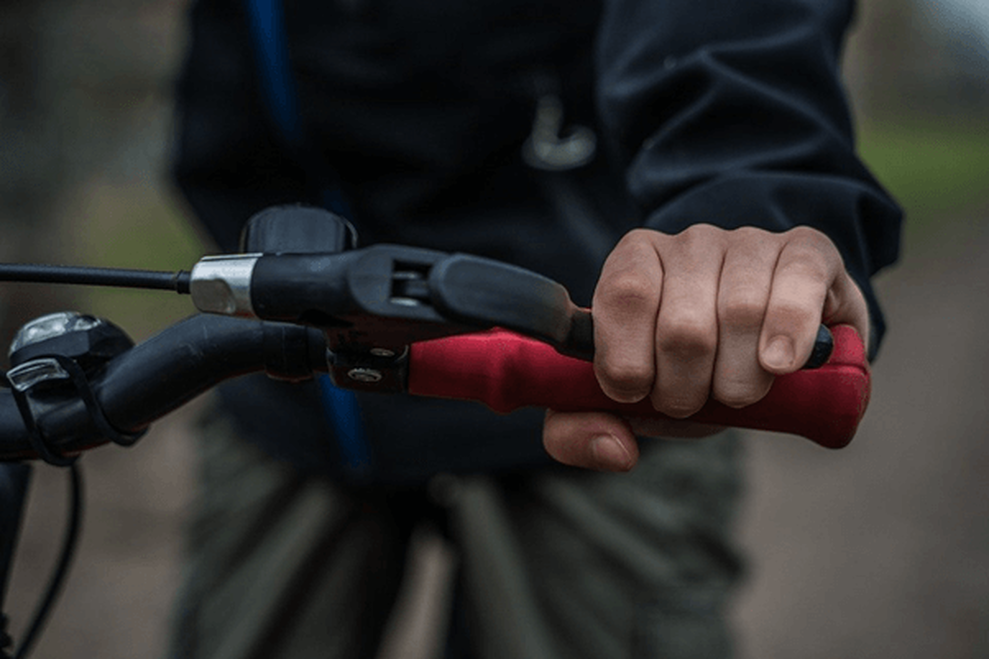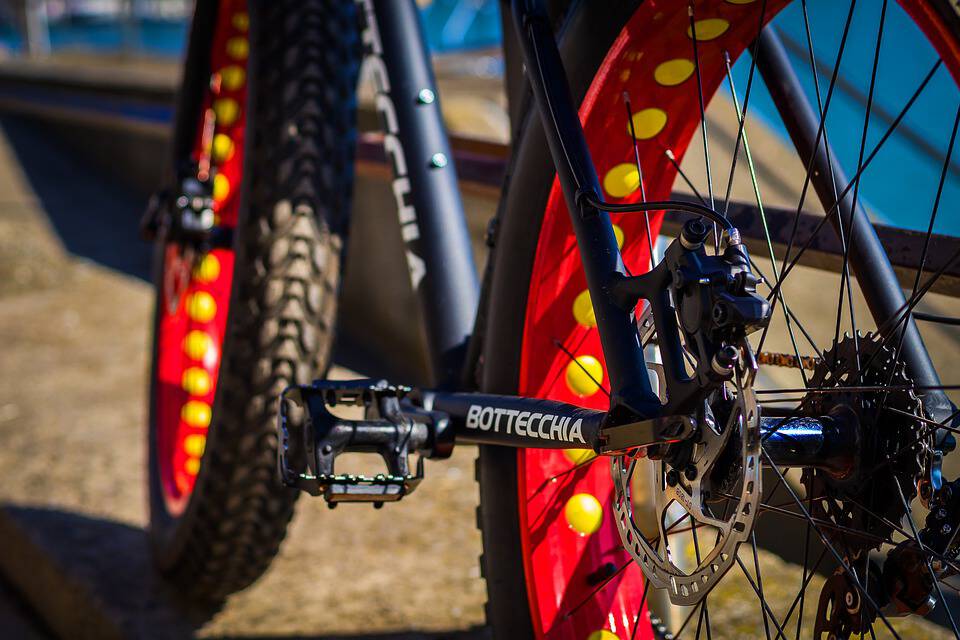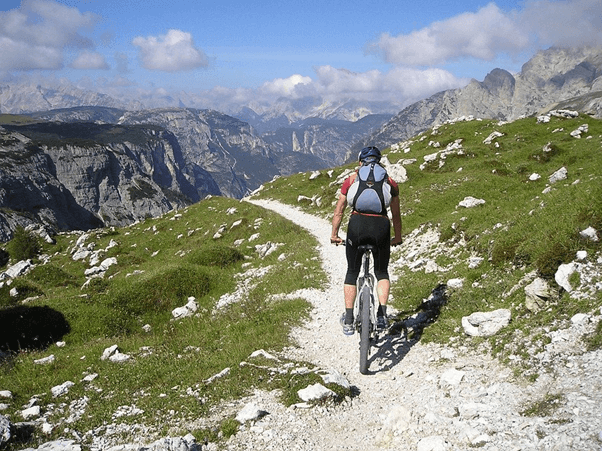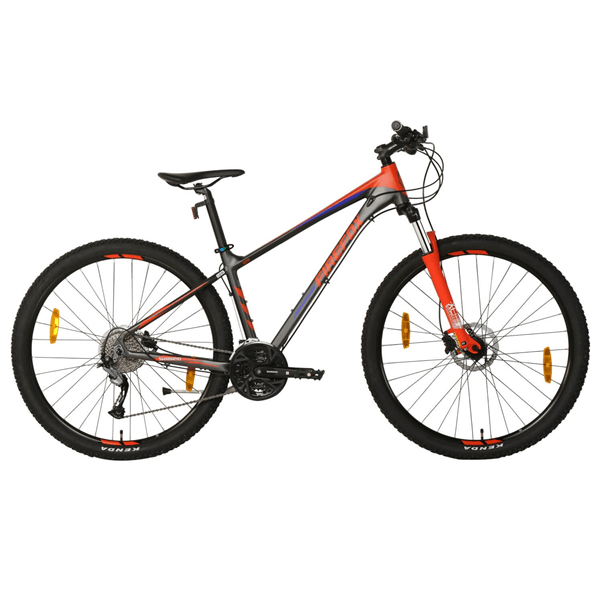Bicycle Brakes, Cycle Brakes, Different Types of Brakes in a Bicycle - Firefox

Every wondered why do some bikes have disk brakes and others don't? What are the different types of brakes available in bicycles in India? To know more, read on!
What are the different types of Bicycle Brakes?
Riding a bicycle can mean different things for different people. From being a sport, to a hobby, a mode of commute, or just pure thrill, it can mean many things. But one thing that's common to every bicycle rider is the desire to have full control over their bikes while riding them, and this is where brakes come into the picture. Bicycle brakes enable you to slow down or stop your cycle in a controlled manner. It won't be wrong to say that brakes are one of the most essential aspects of a bicycle.
Today, different types of brakes are available in the market. While the primary function of all brakes is to reduce the speed or stop the bike, each brake possesses different characteristics that makes it stand out from others. But before we take a look at the different types of brakes, let's know how bicycle brakes work.
How Do Bicycle Brakes Work?
Every cycle brake is designed around a brake pad that creates friction with a braking surface located on the cycle's wheel. The brake pad is pushed against the surface when the wheel is in motion. When pressure is applied at the brake lever, the force of friction also increases. These two factors act along with a tire's grip to slow down the cycle.
Types of Bicycle Brakes
Brakes for bicycles are mainly of three types: Rim brakes, Disc brakes, and Drum brakes.
- Rim Brake:- In a rim brake, the cycle brake pads apply force to the rim of the wheel, causing the bicycle to slow down and stop. This type of brake is generally activated by a lever positioned on the handlebar. Rim brakes are sturdy, light, cost-effective and straightforward. Though they are easy to maintain, they require regular maintenance.

In a rim brake, the cycle brake pads apply force to the rim of the wheel, causing the bicycle to slow down and stop. This type of brake is generally activated by a lever positioned on the handlebar. Rim brakes are sturdy, light, cost-effective and straightforward. Though they are easy to maintain, they require regular maintenance.
What Are the Main Types of Rim Brakes?
Rim brakes are of many types, including rod brake, caliper brake, side-pull caliper brake, centre-pull caliper brake, U-brake, cantilever brake, traditional cantilever brake, V-brake, roller cam brake, delta brake, and hydraulic rim brake. Out of these, the main types are:
- Caliper Brake:-This is a cable-activated brake. This braking system ensures that the brake mounts to one particular point above the rotating wheel. Since caliper brakes are less effective for wide tires, they are not the preferred brake system for mountain bikes, but are very popular with road bikes.
- Cantilever Brake:-This rim brake has the cable attachment and <strong>brake shoe on each arm, located on the same side of the fork or pivot, but at different points. Since these brakes allow a wide distance between the pads and the mount, they are often preferred for bikes with wide tires. In other words, cantilever brakes are an excellent choice for mountain bikes.

- V-Brake:-V-brake, also known as a direct-pull brake or linear-pull brake, is a kind of cantilever brake. The basic mechanism of V-brakes is that they work by mounting on the bosses located on the same frame. They typically have long arms. The cable remains attached to one arm and the cable housing to the other. Since V-brakes do not need an isolated cable stop on the fork, they work well with the suspension systems present on several mountain bikes.
How to Adjust V-Brakes?
To adjust V-brakes, the first step is to align the brake levers. To do so, you need to loosen the clamp, align and adjust them as per your requirement, set the clamps back in position, and tighten them. Next, remove the brake pads and inspect them. Clean or replace them as needed and set the brake pads back in position.
- Disc Brake:- In this system, the main disc brake component is a rotor or metal disc that is located on the wheels hub. The basic of disc brakes is that a caliper having two brake pads gives a squeeze to the rotor to bring the wheel to a halt. A disc brake cycle offers several advantages, such as incredible braking power, high reliability, exceptional functioning in almost every weather condition, and no rim wear. Another plus point of this brake system is that it allows you to apply the exact amount of braking power that you want. This type of brake is commonly used in off-road, touring, and hybrid bikes.
What Are the Main Kinds of Disc Brakes?
Disc brakes are mainly of two types: mechanical and hydraulic.
- Mechanical Disc Brake:- Cables, similar to rim brakes, activate mechanical disc brakes. These brakes are light in system weight, and low on cost and maintenance. At one point in time, it was the only type of disc brake that was compatible with the brake lever attached to drop handlebars, but not anymore.
- Hydraulic Disc Brake:- In a hydraulic disc brake for a cycle, hydraulic fluid placed inside a completely sealed line replaces the use of cables. When the brake is applied, the pressure caused by it makes the fluid travel into the caliper. This results in the pads pressing against the disc and reducing the speed of the cycle. This brake is known to offer more control and better braking power to the rider. The main advantage of hydraulic disc brakes is that since it is a closed or sealed brake system, dirt, water, or debris cannot impact the brakes. This makes them maintenance-free to a large extent.
How to Adjust Disc Brakes?
You have to follow different cycle brake adjustment methods to adjust mechanical disc brakes and hydraulic disc brakes
- Adjusting a Mechanical Disc Brake:-To adjust a mechanical disc brake, use a screwdriver to loosen the small set screw sitting on the calipers side. Look for the adjustment dial on the calipers side and twist it a bit to adjust the brake. Keep adjusting till the caliper finds itself directly centered above the rotor. Test if the brakes have tightened by squeezing the lever corresponding to the brake you are working on. Finally, tighten the bolts and screw.
- Adjusting a Hydraulic Disc Brake:-To adjust a hydraulic disc brake, locate the two hex bolts that sit on the calipers side and loosen them. Next, hold the brake lever corresponding to the wheel you want to adjust and squeeze it a couple of times. This will ensure that the caliper on the rotor finds its place back in the center. Tighten the bolts and release the lever.
Are Disc Brakes Better Than V-Brakes?
Disc brakes are among the most preferred brakes for mountain bikes. They score high on factors like easy installation and configuration, and can stand extreme weather conditions like snow and rain. Also, they do not damage the tire rims. They tend to be heavier than V-brakes, which could increase the strain on the wheel spokes. Before the advent of disc brakes, V-brakes were the popular choice. They can be easily maintained and replaced. They put no added pressure on the spokes or hubs. Also, they are budget-friendlier than disc brakes, but tend to wear out the rims. They are not ideal for riding in the rain or on muddy tracks, and you might need to replace the brake shoes regularly. So, it becomes clear that both the brake systems have their own advantages and disadvantages. Depending on your needs and budget, you can decide which one is better for you.
How to Maintain Disc Brakes?
A little care on your part can ensure a longer life for your disc brake. Here's how you can maintain the disc brakes on your bicycle:-
- Always keep your rotors free from contamination
- If you contaminate the rotors, make sure to clean them
- Use a disc brake cleaner to clean your rotors
- If your pads are contaminated, replace them
- Make sure not to hit your rotors
- Drum Brakes:-Drum brakes operate using a lever present on the handlebars. The use of both rods and cables is popular in this braking system. The gears are usually placed in the rear hub, but they can be present in the front hub as well. Drum brakes offer the advantages of low maintenance and reliable braking in varied weather conditions, including rains and dirt trails. On the minus side, they usually are heavier than disc brakes and rim brakes. They also have a more complicated working system than rim brakes and are not as effective. These brakes are great for commuter bicycles, and are also preferred for utility bikes in many countries.
- Coaster Brakes:- A coaster brake is a kind of drum brake that is attached to the rear hub of a bicycle. It is operated by simply pedaling the cycle backward, and hence it is also referred to as a backpedal brake. This braking system is known for its efficiency. Coaster brakes are widely used in regular city bikes with a single speed. This type of brake works with the internal parts greased, which ensures smooth and quiet operation. They also function well in adverse weather conditions, like snow or rainfall. One of the major advantages of coaster brakes is that they may work fine for years at end without requiring any maintenance. However, when it comes to repairs, they are more complicated to repair than rim brakes. On the negative side, this braking system requires the chain to be completely engaged and intact. If there is disengagement or break of the chain from the rear cog or chain wheel, this braking system becomes ineffective.
Apart from these popular braking systems, there are several other kinds of brakes for bicycles, such as spoon brake, duck brake, drag brake, band brake, and more.
Things to Know About Bicycle Brakes
There are a few other things that you need to know in order to make an informed decision when looking for a bicycle brake. These include -
How Important are Brake Pads for a Bicycle?
Brake pads are among the most essential components of a bicycle. The effectiveness of your braking system depends on brake pads, especially when you are riding on slippery or wet roads, and since bike pads are prone to wear and tear, they need to be replaced after a point of time.
Are all Bike Brake Pads the Same?
In a broader sense, all bike pads are the same, but variations exist in terms of shapes and sizes. Also, brake pads differ in terms of the material used in their manufacture. There are brake pads made up of non-metallic materials, semi-metallic materials, and metallic materials. One thing to keep in mind is that the new brake pads you select for your bike must be compatible with your existing braking system.
What are the Best Types of Brakes for a Mountain Bike?
Disc brakes are one of the most popular braking systems for mountain bikes. Almost all downhill bikes use this braking system. A majority of the mountain riders depend on hydraulic disc brakes, but there is still a section of riders who prefer having the user-friendly and lightweight rim brakes on their bikes. Rim brakes are also an option for mountain bikers who have a budget constraint.

How Do You Tell If You Have Air in Your Brakes?
While using the brake, if the levers have a spongy feel or the brakes are inconsistent, these are classic signs of air present in your braking system. This often happens when the brake pads face too much wear and tear.
What Fluid Should You Use in Your Brake?
Most brakes have specific recommendations for the fluids to be used for their flawless functioning. These often include particular kinds of <strong>brake fluid mineral oils. But make sure not to use DOT fluid and mineral oil together. These two aren't cross-compatible. Using them together can result in the swelling of seals and failure of the braking system. Now that you know about the various bicycle brakes, you can make an informed choice. If you are looking for high quality, effective disc brakes, the Firefox Road Runner Pro disc brake is a good option. Preferred by the majority of the riders, this bike ensures excellent stopping power. In case you prefer a V-brake, you can consider the Firefox Road Runner Pro V-brake for the purpose. Ticking all the boxes for price and utility, it makes for a great choice.